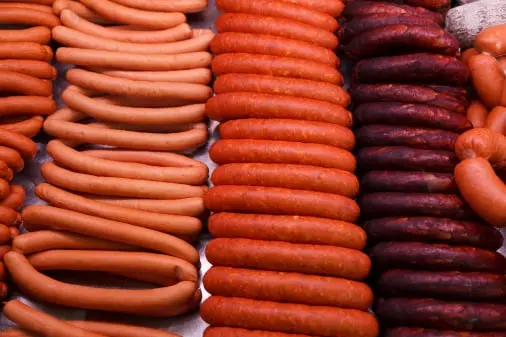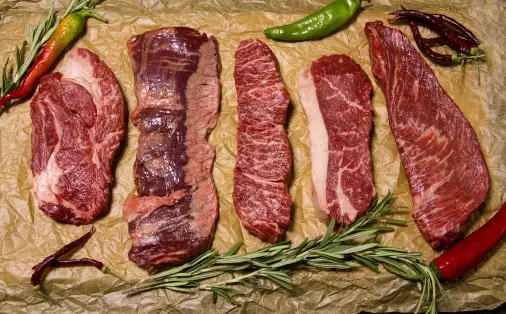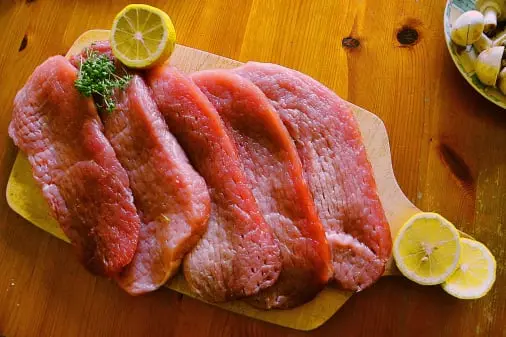Meat packing traceability software:
Meat packing traceability software & meat processing software works with INEXPENSIVE HARDWARE, delivers production & beef packing control, quality control, animal delivery, batch processing, weight accountability with no unaccounted yield loss for processing all animal and fresh meat products. The premium beef processing software software solution for modern meat packers and meat processors.

Meat packing Traceability software during production & packing
View Traceability App Specifications.
Meat packing software & meat processing software:
Farmsoft is the ultimate modern meat packing solution for small and medium sized meat packers. We are here to revolutionize the way meat packing industries operate and provide you with a comprehensive solution that guarantees complete accuracy, traceability, and efficiency in your entire meat packing process. At Farmsoft, we understand the complexities and challenges of the meat packing industry, from slaughtering to packaging and labeling. We have developed a software solution that simplifies the entire process while ensuring accuracy, compliance, and profitability. Our meat packing software provides a range of features that automate and streamline your entire operation, reducing errors, and minimizing administrative costs. Let's take a closer look at some of the key features and benefits of Farmsoft Meat Packing Software.
Accuracy in Slaughtering:
Our meat packing software provides a comprehensive solution that manages every step of the slaughtering process, ensuring accuracy, compliance, and profitability. With our software, you can create custom slaughter schedules, manage inventory, and track the entire slaughtering process from start to finish. We provide a range of features that help you maintain accurate records of every animal, including breed, weight, and age. You can also track the source of each animal, ensuring compliance with regulations and standards.
Accurate Fabrication and Packing Process:
Our meat packing software makes the fabrication and packing process super accurate and fast. You can easily manage inventory, track production, and automate the entire process, reducing errors and ensuring accuracy. Our software allows you to create custom packaging and labeling templates, ensuring that every product is accurately labeled and packaged. This feature helps you streamline your entire operation and ensures that every product is accurately labeled and packaged.
100% Accurate Automated Finished Product Labeling:
Our meat packing software guarantees 100% accurate automated finished product labeling, reducing the risk of labeling errors and ensuring compliance with regulations and standards. With our software, you can create custom labeling templates and automatically print labels based on specific criteria, such as weight, product type, and packaging. This feature ensures that every product leaving your facility is accurately labeled and compliant with all regulations and standards.

Meat packing software pack house hygiene checklist for food safety
100% Accurate Automated Finished Product Labeling:
Our meat packing software guarantees 100% accurate automated finished product labeling, reducing the risk of labeling errors and ensuring compliance with regulations and standards. With our software, you can create custom labeling templates and automatically print labels based on specific criteria, such as weight, product type, and packaging. This feature ensures that every product leaving your facility is accurately labeled and compliant with all regulations and standards.
Automatic Invoicing for Services:
Our meat packing software provides automatic invoicing for services, reducing administrative costs and improving cash flow. With our software, you can easily generate invoices for services, track payments, and manage your accounts receivable. This feature helps you streamline your billing process, reducing administrative costs and improving profitability.

Meat packing Traceability software management best practices
Online Customer Processing and Fabrication Specification Management:
Our meat packing software provides online customer processing and fabrication specification management, enabling you to manage your entire operation online. With our software, you can easily manage customer orders, track inventory, and manage production schedules from any location. This feature helps you streamline your entire operation and ensures that every customer order is accurately processed and fulfilled.
Instant Traceability up and down the Supply Chain:
Our meat packing software provides instant traceability up and down the supply chain, ensuring compliance with regulations and standards. With our software, you can easily track the source of each animal, the entire slaughtering process, and the production and packaging of each product. This feature helps you ensure compliance with regulations and standards and reduces the risk of errors in your supply chain.
Alerts to all Relevant Section Managers:
Our meat packing software sends alerts to all relevant section managers when there is a potential issue, ensuring that every issue is quickly addressed and resolved rapidly.

Meat packing software Supplier Traceability Management
Print pick sheet to pick meat orders manually, or scan inventory / pallets onto orders, or auto select inventory, or rapidly sell without an order. Track paid, and unpaid invoices. Attach documents to invoices / photos of outgoing shipments. Rapid inventory collection by customers and scanning of pallets to ensure accuracy. Abattoir management software.